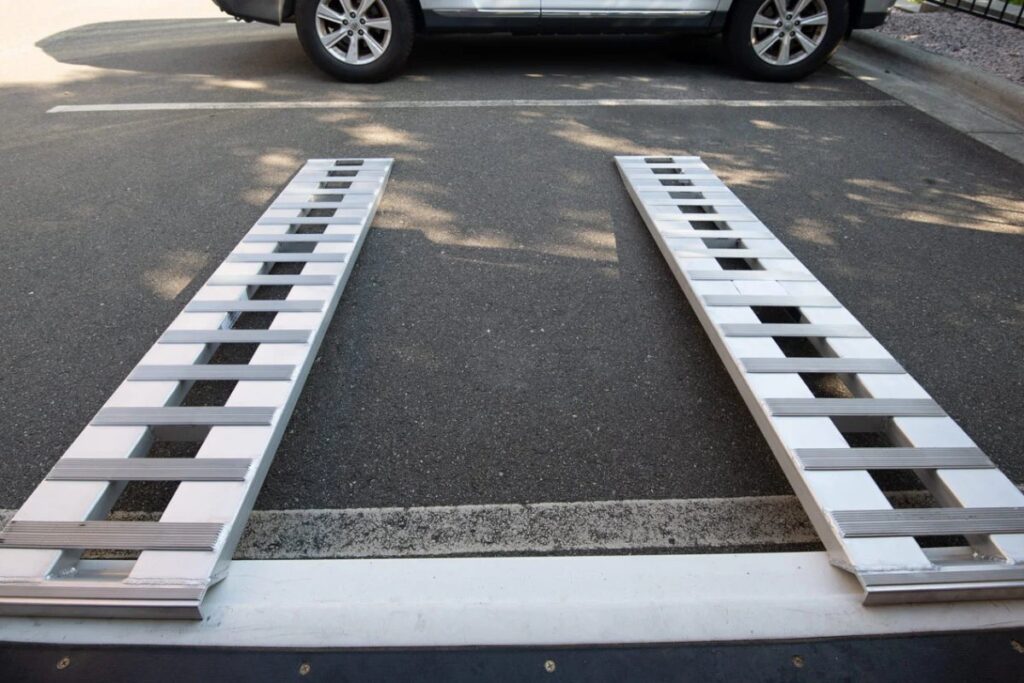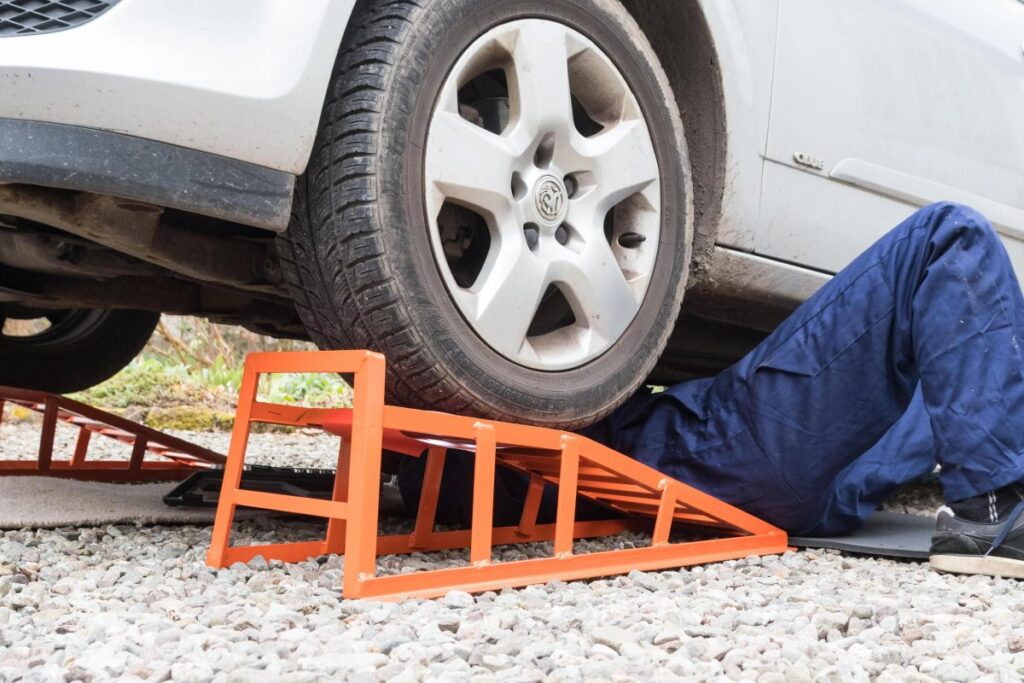Ramps are one of those ubiquitous daily objects that, until you realise that you need them, will probably rarely pop up in your mind, or conversation, or affect your actions. But just wait until you need to get a pram down a flight of steps, drive a vehicle where it needs to go or lift a heavy load to a higher level without one. Then you will stop and notice without a doubt.
But what are ramps, and what different types are out there for different uses? Here we will take an in-depth look and tell you everything you need to know.
What is the meaning of the word ramp?
To start with, let’s take a look at the word ramp. Archaically, when you were describing a ramping lion, it was one that was going up onto its back legs. It comes from the French word for slope, and also to climb. All in all, this is not that far from the more traditional definition of a plane or sloping surface that connects a lower and a higher level.

You can find ramps at the entrances of buildings, in parking structures and pretty much wherever you look if you pay attention. They have numerous daily applications and come in many types, but the basic definition of a slope connecting two heights remains the same.
What are examples of ramps?
Ramps can have many forms and purposes, but their essence remains the same. They are there to allow a person, vehicle or anything that needs to go from a lower level to a higher level or vice versa smoothly and with ease.
Here are just a few of the key examples of ramps and when and where you might find them:
- Wheelchair ramps
Now found in more and more public places, and obviously, in the homes of those that require greater access, wheelchair ramps are one of the first types that come to mind when you think of the usefulness of ramps. Indeed, all new public buildings in many countries including the UK are required now to be wheelchair accessible, so we will only see these ramps becoming more commonplace in the future.
- Car ramps
The safest and best way to more easily reach the underside of your car when carrying out various jobs, these work by placing a ramp in front of either the front two, back two, or all four wheels, driving up and braking. They are mostly used by people who like to work on their car, or carry out routine bits of maintenance like oil changes.
- ATV ramps
Another example is the ATV ramp, used as the name suggests to load ATVs into the back of your truck. These can be as simple as a piece of wood or, preferably, a strong and sturdy professional aluminium ramp or similar. The latter are far better as they are safer and represent the best way to get your ATV into the vehicle without tilting or falling back.

- Loading ramps
Loading ramps are one of the most used and important of all types of ramps. They allow companies to move large amounts of heavy goods into containers, onto Lorries and so much more. Loading ramps are incredibly useful and the process of moving goods would be nearly impossible without them.
You can also divide ramps into categories of permanence, or whether they remain in situ or are transported about as you go. These are:
- Permanent ramps
A permanent ramp is put in place because it is constantly in use, needed regularly, or in a place that isn’t used very often so a ramp is not inconvenient or in the way. This could be a wheelchair ramp at a hospital or other building, a loading ramp leading to a warehouse, or really anything that is always there. Often made of concrete, they can still be made of wood or metal if preferred.
- Semi-permanent ramps
Semi-permanent ramps are set up in places where they will be used a lot, but only for a certain period of time. This usually means places like exhibitions or fairs that are around for a short time. Because they aren’t fully permanent, these ramps cannot be made of concrete, but are made instead of metal or wood. Wherever possible, metal should be used as it is stronger and sturdier, while wood can more easily bend or become unstable.
- Portable ramps
Finally, we have portable ramps. These can be moved from place to place, transported with you and even folded up to make it easier in some cases. They are ideal for situations where you may go to several locations to unload goods, or if you aren’t sure the place you are going has a wheelchair ramp. They are mostly made of lighter yet strong metals like aluminium that can hold plenty of weight without weighing too much themselves.

What are the synonyms of the word ramp?
There are many other terms that are used synonymously with the word ramp, some meaning literally the same, while others can be taken in different ways. You can call a ramp in some circumstances a slope, an incline, an inclined plane, an ascent, a drop, a tilt, an acclivity or declivity.
The last two are true synonyms, meaning an upward or downward slope respectively. All have to do with a higher level, a lower level, and the piece in between that links the two at an angle. A straight drop is quite different, it is the angle that truly makes the ramp, and that allows you to safely get from one height to the other along with any cargo or vehicle that you wish.
Final thoughts
Ramps are incredibly useful yet simple slopes that allow you to accomplish far more than you could without them in the right places and situations. Whether you are a wheelchair user, need to transport your ATV, or move large or heavy items, ramps are an essential part of life and should be done right.If you are looking for the best ramps around for a variety of uses and purposes, check out what you can find on Google with a quick search of ramps.
